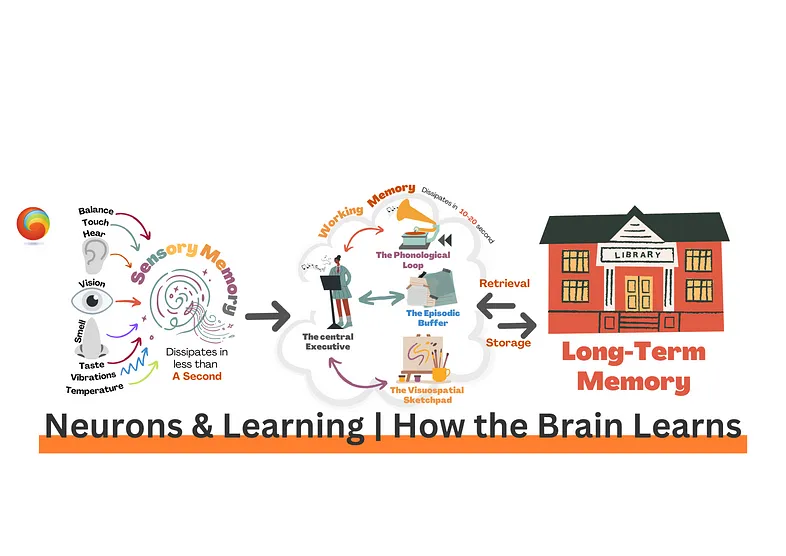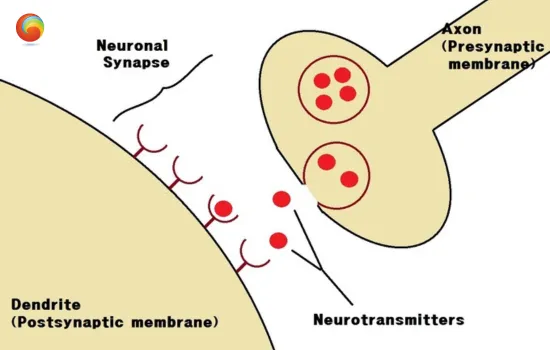Understanding neurons & your brain to help you learn better

How we learn
Neurons and Learning: Knowing the simplest techniques for learning can assist you in maximizing your efforts while you are attempting to collect new thoughts, standards, and abilities.
But it’s also the mechanism behind literally every biological development that includes cell memory. Particularly brain cell memory, when mixed with motivation and planned cognitive processing.
So, what are neurons and learning?
Learning means retaining the knowledge that you have gained. The learning process begins when you have a new experience, whether that is reading a new word, listening to someone explain a concept, or trying a new method for solving a problem.

Neurons and Learning
There are four types of learners: reading/writing, hands-on, audio, and visual. Some people are a combination of these four styles; they have a predominant learning style.
Let’s try to understand the very first step, a neuron.
Neurons consist of a compact cell body, dendrites, and axons. They are responsible for information processing and converting chemical and electrical signals back and forth.

Biological structure of a neuron
Dendrites are branch-like extensions that grow outward from the cell body when the environment is enriched.
Axons have two essential functions: to conduct information in the form of electrical stimulation and to transport chemical substances.
Myelin is a fatty substance that forms around well-used axons, and all of the larger axons are myelinated.
So, how do neurons make connections?
Axon-Synapse-Dendrite Pathways Are Electrical to Chemical to Electrical.

Neuron and learning — Connection of two different neurons
More connections make for more efficient communications. No neuron is an endpoint or termination for information; it only serves to pass it on. A single neuron can receive signals from thousands of other cells, sometimes as far as a meter away, and its axon can branch repeatedly, sending signals to thousands more
Neurons and learning: where does learning take place?
When the cell body sends an electrical discharge outward to the axon, it stimulates the release of those stored chemicals into the synaptic gap, which is the space between the end of an axon and the tip of a dendrite.

Neuron learning at the synaptic gap
When we say cells “connect” with other cells, we really mean that they are in such close proximity that the synapse is easily, and almost effortlessly, “used” over and over again. New synapses usually appear after learning.
Learning based on Neuron behavior
Classical conditioning
In classical conditioning, a response already associated with one stimulus is associated with a second stimulus with which it had no previous connection.

Pavlov’s Experiment of conditioning
Pavlov (a Russian psychologist ) saw that the dogs would salivate in response to the food placed in front of them, but he noticed that his dogs would begin to salivate whenever they heard the bell indicating that their food is ready.
Habituation

Birds don’t fear the scarecrow anymore ( Habituation )
Habituation occurs when we learn not to respond to a stimulus that is presented repeatedly without change, punishment, or reward. We learn not to focus our attention on it. It is a form of non-associative learning that does not require conscious motivation or awareness.
Sensitization
Sensitization is the strengthening of a neurological response to a stimulus due to the response to a secondary stimulus. Sensitization occurs when a reaction to a stimulus causes an increased reaction to a second stimulus. It is essentially an exaggerated startle response and is often seen in trauma survivors.

Neurons and learning: Sensitization
During habituation, fewer neurotransmitters are released at the synapse. In sensitization, however, there are more pre-synaptic neurotransmitters, and the neuron itself is more excitable.
To know more about how neuronal processes, such as potentiation, attention, engagement, and consolidation, influence the learning experience read here!
It also underscores the importance of managing stress to optimize cognitive function and foster effective learning outcomes.
Frequently Asked Questions
How do neurons affect learning?
- Neurons are the fundamental building blocks of the nervous system, and they play a crucial role in learning. When we learn something new, neurons in our brain form connections called synapses. These synapses allow information to be transmitted between neurons.
Why are neurons important for learning?
- Neurons are essential for learning because they enable the transmission and processing of information in the brain. Through the formation of connections called synapses, neurons create neural pathways that encode and store knowledge. This process, known as synaptic plasticity, allows us to acquire, process, and retain information, facilitating the learning process.
